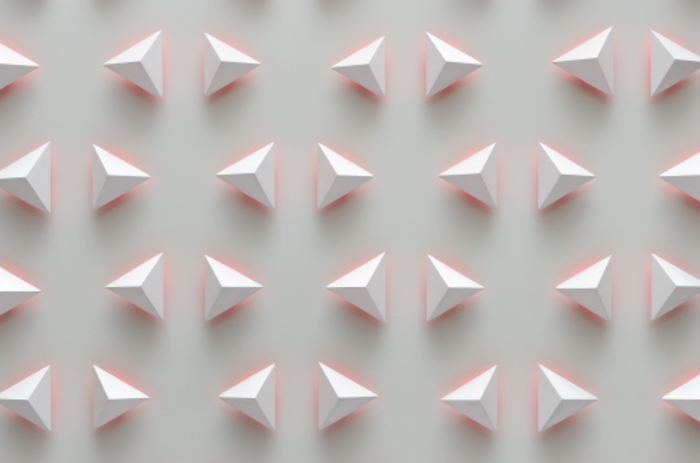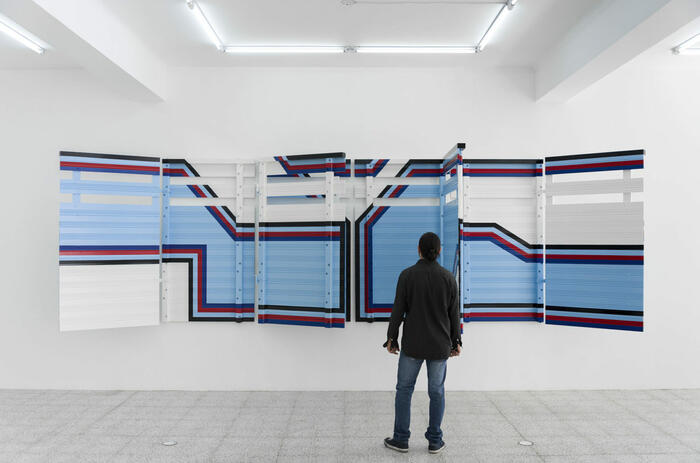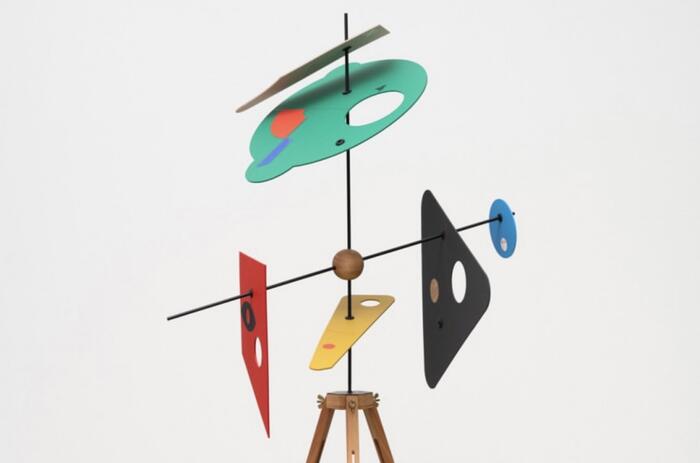DARÍO ESCOBAR QUESTIONS THE LIMITS BETWEEN THE POPULAR AND THE CULTURED IN HIS EXHIBITION “SOMETIMES THINGS WORK FOR THE WRONG REASONS”
Galería RGR (Mexico City) presents the fourth individual exhibition in the country of the Guatemalan artist, curated by curator and art critic Daniel Garza-Usabiaga. Questioning the relationship between the object and the social masses, the exhibition will be open until June 5, 2021.

The exhibition A veces las cosas funcionan por las razones equivocadas (Sometimes Things Work for the Wrong Reasons), presents works that are part of the series Geometric Constructions and Modular Constructions, made from 2012. Through a formal and conceptual research, within the territory of the pictorial, the artist offers a critical and incisive reflection on geometric strategy. Escobar’s starting point is Latin America’s “popular culture”, which dialogues with the "universal" geometric art history. From this encounter, some questions arise: How we can define “the cultured” and “the popular”? Who is in charge of defining them?
The exhibited artworks examine the geometric abstraction of the second half of the twentieth century, and use as its starting point the designs in the boxes of the “redilas” trucks: commonly known vehicles that transport fruits, vegetables, passengers, textiles and materials from distant places to the business centers that sustain the economy of some regions of Mexico and Guatemala. Those tend to be painted with clearly delimited bands of color that play with horizontal and diagonal lines.
Regional references in Escobar's works highlight the presence of a broad and shared aesthetic sense that seems to express itself in a —roughly speaking— intuitive way, within the kind of design that runs on top of the rack boxes and on countless everyday objects and surfaces, such as the facades of some houses visible throughout the Latin American territory.
The artist presents a type of geometric abstraction which originates in the attention to a non-specialized practice in contrast with the highly intellectualized processes that generally have defined this kind of painting in Europe and the United States throughout the twentieth century. With this, Darío Escobar questions the solutions that are recognized or have been institutionally legitimized as valid forms of geometric abstraction and those that haven’t. At the same time, his structures, colors and shapes are mixed to reflect on whether the promise of modernity — that was so desired in Latin America— hasn't come yet, or if it has already arrived and went unnoticed.
Galería RGR. A veces las cosas funcionan por las razones equivocadas, Darío Escobar (20/03/2021-05/06/2021) from Galería RGR on Vimeo.
Darío Escobar (Guatemala City, 1971) is one of the Latin American artists with the greatest international visibility. Trained in architecture, his work is characterized by formal and conceptual investigation of objects; his insertion in the field of visual arts and the history of art itself. Escobar's work has continually challenged the viewer to reconsider the central relationships of contemporary life: the link between the subject and mass culture, the elaboration of new identities based on consumption, and the questioning of the popular and the cultured. His works represent objects that invade daily experience, that cause a reflection on the space itself in the social, political and economic systems that sustain existence.
Darío lives and works between Mexico City and Guatemala.
Galería RGR
Calle Gral. Antonio León 48, San Miguel Chapultepec
11850 Ciudad de México, México







